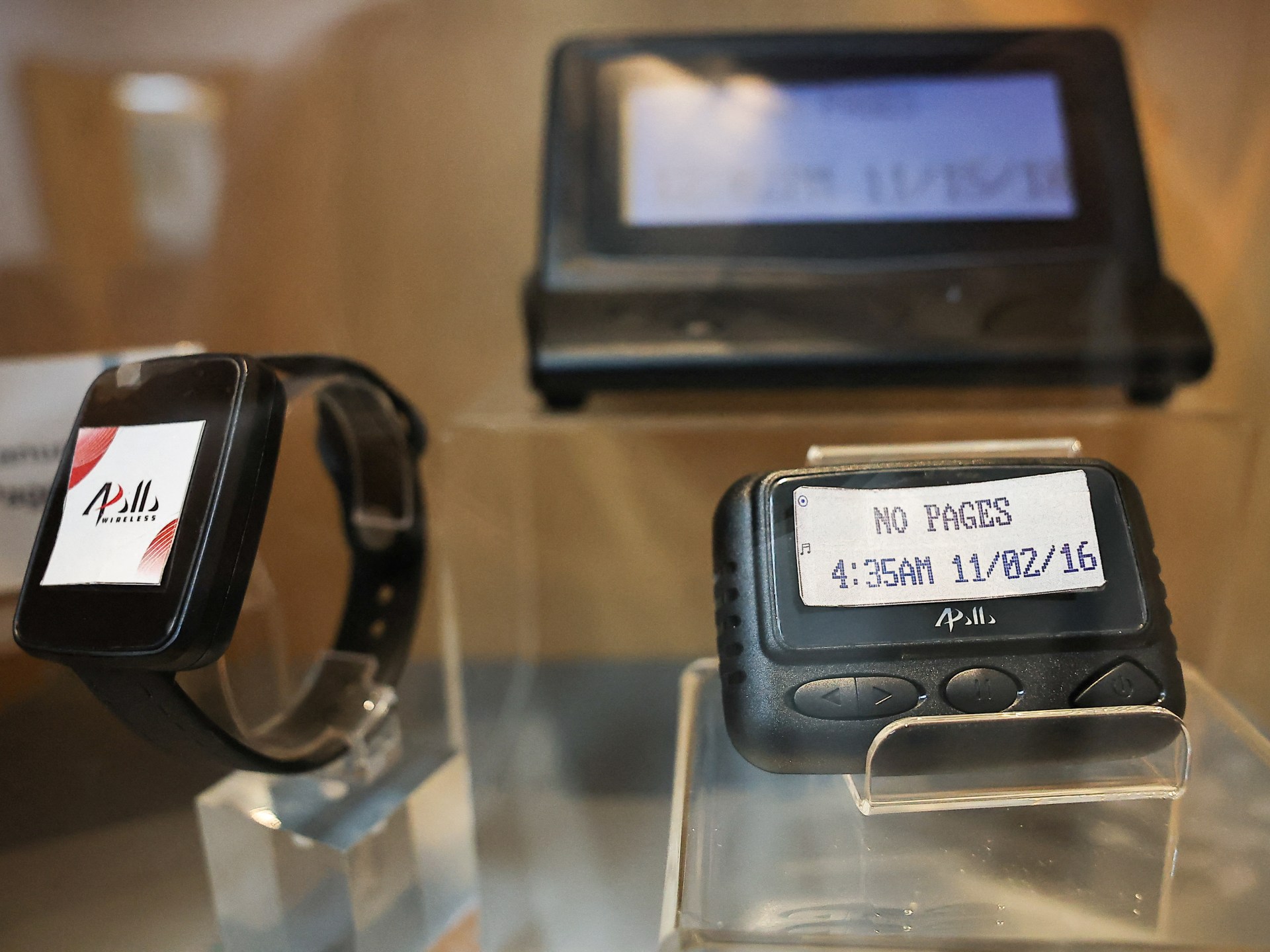Hundreds of pagers belonging to the armed group Hezbollah exploded on Tuesday in Lebanon, killing at least 12 people and wounding about 2,750. Some pagers belonging to Hezbollah also exploded in Syria, leading to some injuries.
Lebanon, Hezbollah and the group’s allies have all blamed Israel. But what really happened? Many analysts believe the answer might lie in how Hezbollah got the pagers in the first place — because that might hold clues to whether the devices were tampered with to facilitate the explosions.
Here’s what we know and what experts believe might have happened:
About 3:30pm (12:30 GMT), hundreds of pagers all over Lebanon started exploding.
Hezbollah released a statement on Tuesday saying two of its fighters and a girl were killed as “pagers belonging to employees of various Hezbollah units and institutions exploded”.
The Iran-backed group attributed the pager blasts to Israel, which has been involved in tit-for-tat attacks with Hezbollah across the Lebanon-Israel border since the beginning of Israel’s war on Gaza.

Israel’s military has refused to comment on the explosions. Hezbollah has promised retaliation against Israel.
A Lebanese security source and another source told the Reuters news agency that the Mossad, Israel’s spy agency, planted explosives in 5,000 pagers that Hezbollah had ordered months before the explosions. The sources said a code was simultaneously sent to 3,000 of the pagers, triggering the explosions.
While the exact mechanism used for the pager explosions is unclear at the moment, some experts speculate that the radio system that the pagers rely on was hacked, possibly through a doctored code. The batteries of the pagers could have been triggered to overheat, leading to a process called thermal runaway, which in turn caused the pager batteries to explode.
Some analysts, including Hamish de Bretton-Gordon, a former British army officer and chemical weapons expert, have speculated that the pagers may also have been tampered with along the supply chain and wired to explode on command.
But Brussels-based military and political analyst Elijah Magnier told Al Jazeera his sources close to the ground in Lebanon had shared details from initial investigations carried out by Hezbollah on pagers that did not explode.
Those investigations suggest that Israel placed 1 to 3 grammes (0.04 to 0.11oz) of pentaerythritol tetranitrate (PETN), a powerful explosive, in each device.
Lebanon faces a range of sanctions from the United States, European Union and their Western partners. In addition, the US, United Kingdom and their allies, such as Japan, list Hezbollah among “terrorist” organisations.
That means that companies both registered in these domains or trading with these countries are wary of direct transactions, especially in technology, with Hezbollah — and often with Lebanon at all.
In this case, Magnier said, the pagers procured by Hezbollah were with a third party and they sat at a port for three months, awaiting clearances, before they were finally moved to the Lebanese group.
Hezbollah suspects that it was during those three months that Israel managed to plant explosives in the devices, the military analyst said.
The rechargeable pagers were confiscated and held for some time before being released and shipped to #Lebanon. There, #Israel tempered the pagers and placed the 1-3 gram explosive device in each pager.
— Elijah J. Magnier
(@ejmalrai) September 17, 2024
He added that Hezbollah’s investigation so far shows that metal balls were placed around the pager batteries, allowing the explosive force to propel metal fragments outward, “significantly increasing the lethality of the blast”. He added that this was also done during the three months when the shipment was on hold.
But where were the pagers made — and when?
Taiwan or Hungary?
The trademark of Taiwan pager manufacturer Gold Apollo has been identified on the remains of the exploded pagers, which appear to belong to the company’s AR-924 model.
On Wednesday, the company released a statement denying that it had manufactured Hezbollah’s pagers and saying it was only its logo that was on the devices.
Instead, the pagers had been built by a Hungarian company called BAC through a licensing deal, the Taiwan firm said.
“The design and manufacturing of the products are entirely handled by BAC,” Gold Apollo said in a statement. “We only provide brand trademark authorisation and have no involvement in the design manufacturing of this product.” BAC has not commented so far.
The evidence so far suggests that Hezbollah acquired the pagers around February when the group’s leader, Hassan Nasrallah, ordered members to stop using cellphones because they could be easily intercepted and monitored by Israeli intelligence.

What do we know about BAC?
BAC Consulting is based in Hungary’s capital, Budapest.
Reuters reported that the stated address for BAC is a peach-coloured building in a residential area. While the company’s name is posted there on an A4 sheet of paper, an anonymous source present at the building told the news agency the company does not have a physical presence at the building despite being registered there.
According to LinkedIn, BAC’s CEO is Cristiana Barsony-Arcidiacono, whose profile says she has worked for various organisations, including UNESCO.
Her profile says: “We offer in-depth consulting guiding our client’s journey toward innovation, sustainability, and equity while ensuring connection, and authenticity. Our main services are business development, management consultancy, strategy and partnership planning.”
Al Jazeera reached out to BAC but did not receive a response.





![Tyson Foods Plant [Photo: Food Manufacturing]](https://southarkansassun.com/wp-content/uploads/2023/08/iStock_1185520857__1_.5e441daa51cca-600x337.jpg)







![Silverado Senior Living Management Inc. [Photo: Los Angeles Times]](https://southarkansassun.com/wp-content/uploads/2023/10/download-6-4-600x337.jpg)

![China's Wuhan Institute of Virology [Photo: Nature]](https://southarkansassun.com/wp-content/uploads/2023/09/d41586-021-01529-3_19239608-600x337.jpg)
















